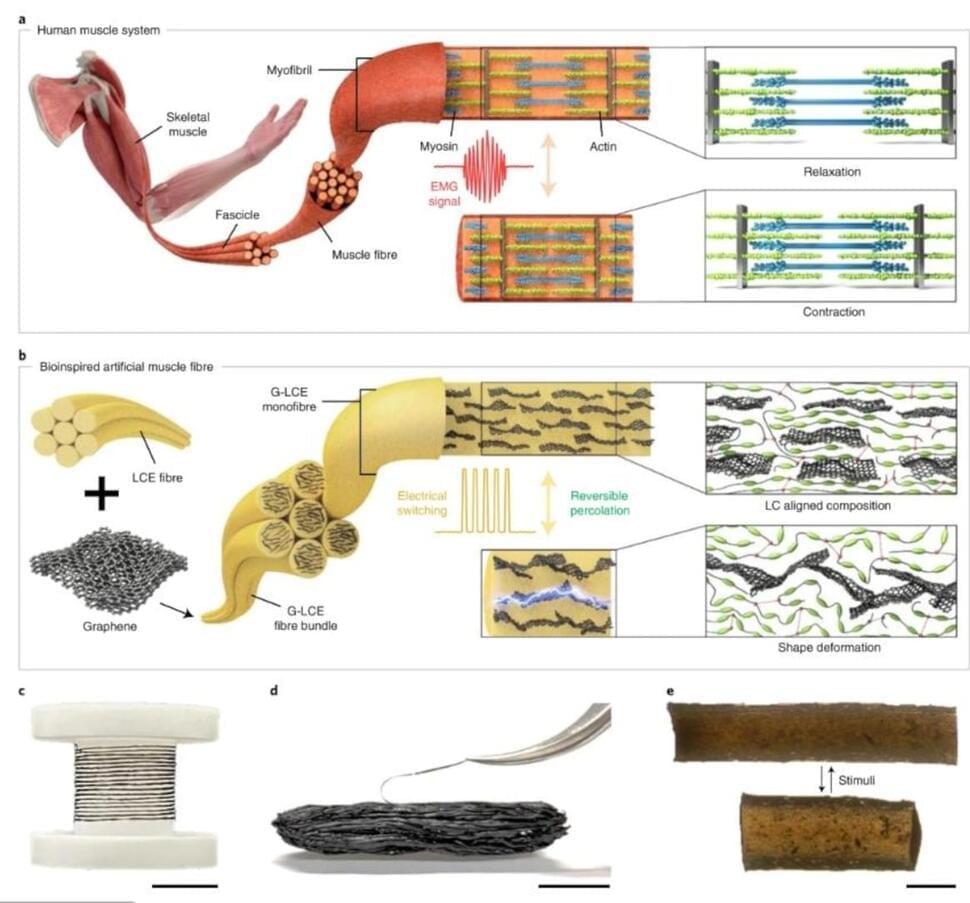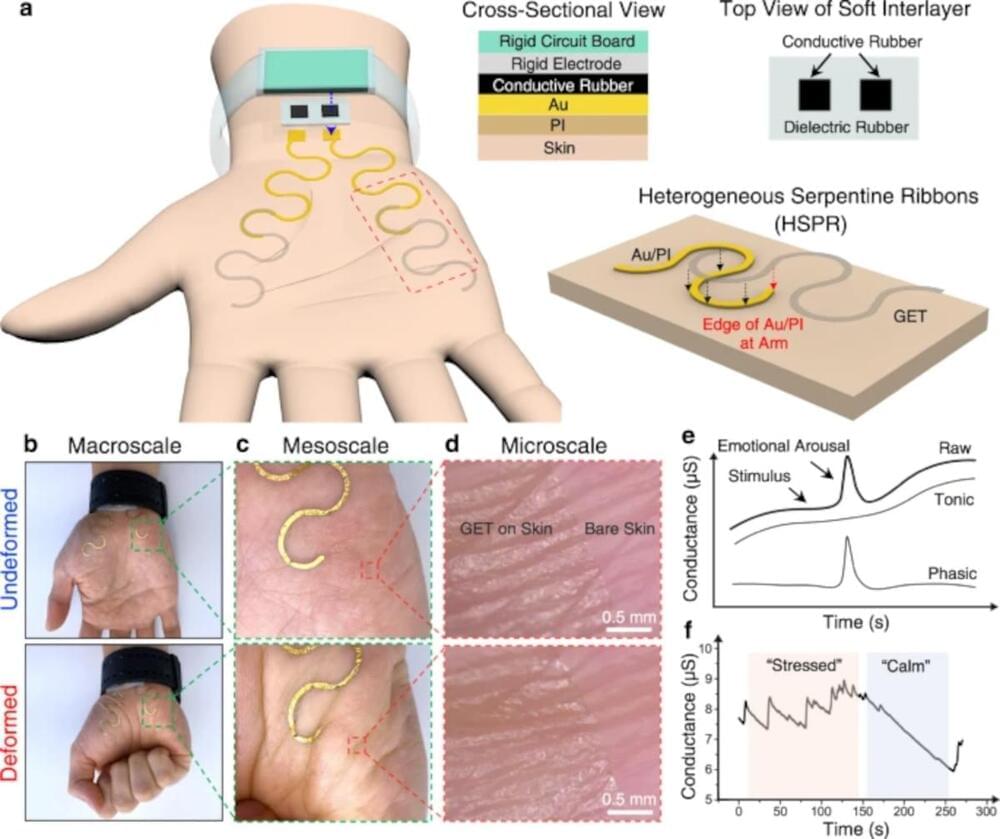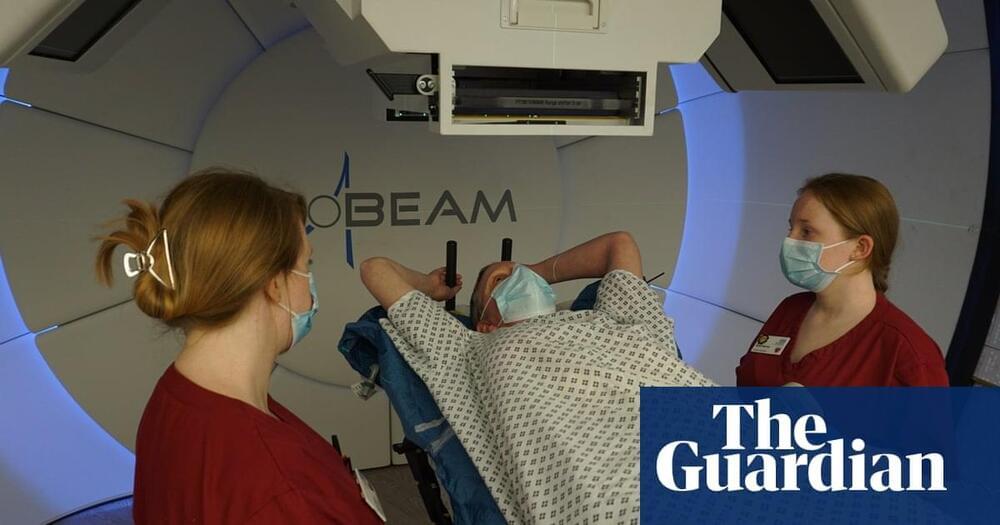Tags: 2D Material Angela Hight Walker Brett Goldsmith Caio Lo Sardo Cardea Bio Council Graphene Graphene Council Graphene News MITO Material Solutions Nanotechnologies National Institute of Standard
AddThis.


Researchers from the Korea Advanced Institute of Science and Technology (KAIST), Pusan National University and CNRS have developed an artificial muscle that is 17 times more powerful than that of humans. The muscle made of graphene-liquid crystal elastomer-based fiber bundles will reportedly be commercialized through a Korean company. Image The main factor that hinders the development of high-performance artificial muscles is that scientists are not able to mechanically select a certain part of the artificial muscle to contract and expand. Large and bulky artificial muscles are not accurate enough.

Researchers at The University of Texas at Austin and Texas A&M University have used electronic tattoo (e-tattoo) technology to measure stress levels, by attaching a device to people’s palms (AKA electrodermal activity or EDA sensing). The researchers created a graphene-based e-tattoo that attaches to the palm, is nearly invisible and connects to a smart watch. Image In June 2022, researchers from the same universities also developed a graphene-based electronic tattoo that can be worn on the wrist for hours and deliver continuous blood pressure measurements at an accuracy level exceeding nearly all available options on the market today.

𝐑𝐞𝐬𝐞𝐚𝐫𝐜𝐡𝐞𝐫𝐬 𝐚𝐭 𝐭𝐡𝐞 𝐔𝐧𝐢𝐯𝐞𝐫𝐬𝐢𝐭𝐲 𝐨𝐟 𝐓𝐨𝐤𝐲𝐨 𝐢𝐧 𝐉𝐚𝐩𝐚𝐧 𝐡𝐚𝐯𝐞 𝐮𝐬𝐞𝐝 𝐚𝐫𝐭𝐢𝐟𝐢𝐜𝐢𝐚𝐥 𝐃𝐍𝐀 𝐭𝐨 𝐭𝐚𝐫𝐠𝐞𝐭 𝐚𝐧𝐝 𝐤𝐢𝐥𝐥 𝐜𝐚𝐧𝐜𝐞𝐫 𝐜𝐞𝐥𝐥𝐬 𝐢𝐧 𝐚 𝐧𝐞𝐰 𝐰𝐚𝐲.
The method was effective in lab tests against human cervical cancer-and breast cancer-derived cells, and against malignant melanoma cells from mice. The team created a pair of chemically synthesized, hairpin-shaped, cancer-killing DNA. When the DNA pairs were injected into cancer cells, they connected to microRNA (miRNA) molecules that are overproduced in certain cancers.
Once connected to the miRNA, they unraveled and joined together, forming longer chains of DNA which triggered an immune response. This response not only killed the cancer cells but prevented further growth of cancerous tissue. This method is different from conventional anticancer drug treatments and is hoped to bring about a new era of drug development.

OzGrav is turning Albert Einstein’s imagination into reality as they pursue groundbreaking discoveries in the rapidly expanding area of gravitational wave physics. Read the article to find out more.

250 feet down a cliff. Notice many of the Musk bashing news outlets are not reporting this. #PleaseShare
Montara, Calif. — A 4-year-old girl, a 9-year-old boy and two adults survived Monday after their car plunged off a Northern California cliff along the Pacific Coast Highway near an area known as Devil’s Slide that’s known for fatal wrecks, officials said.
The Tesla sedan plummeted more than 250 feet from the highway and crashed into a rocky outcropping. It appears to have flipped a few times before landing on its wheels, wedged against the cliff just feet from the surf, according to Brian Pottenger, a battalion chief for Coastside Fire Protection District/Cal Fire.
Crashes along Devil’s Slide, a steep, rocky and winding coastal area about 15 miles south of San Francisco between Pacifica and Montara, rarely end with survivors. On Monday, the victims were initially listed in critical condition but all four were conscious and alert when rescuers arrived.

According to a new study the X-ray light emitted by a certain magnetar – a highly magnetized dead star – appears to indicate that the star has a solid surface and no atmosphere.
A study published in the journal Science has used data from NASA
Established in 1958, the National Aeronautics and Space Administration (NASA) is an independent agency of the United States Federal Government that succeeded the National Advisory Committee for Aeronautics (NACA). It is responsible for the civilian space program, as well as aeronautics and aerospace research. Its vision is “To discover and expand knowledge for the benefit of humanity.” Its core values are “safety, integrity, teamwork, excellence, and inclusion.”

